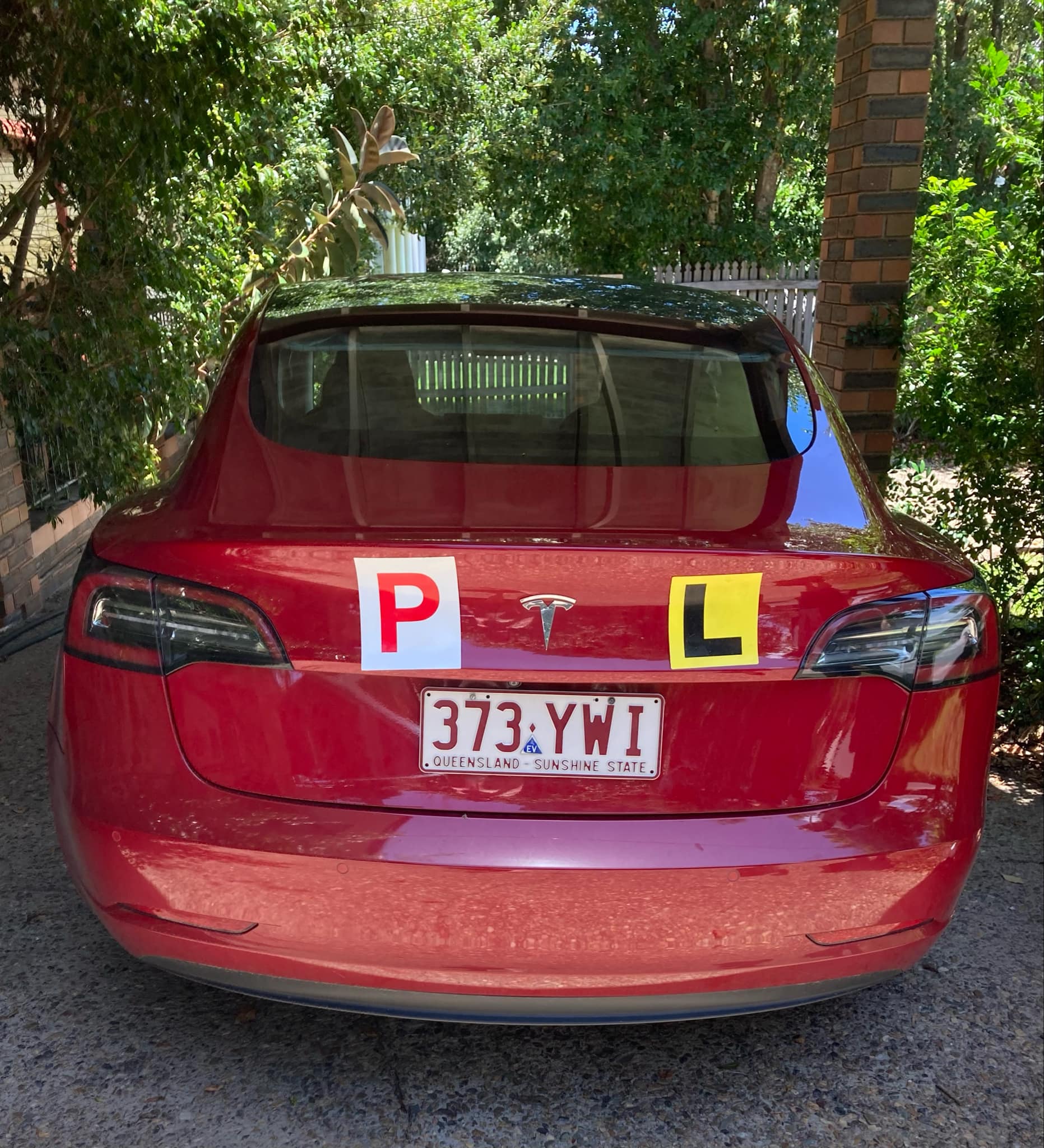Sign up for daily news updates from CleanTechnica on email. Or follow us on Google News!
Let’s start out with the blunt reality that I didn’t bother to watch the Tesla reveal event in real-time, or even consider watching the event. Tesla reveal parties stopped being particularly relevant a few years ago. The Tesla Semi reveal was the last one of any significance from my perspective. Musk’s descent into Ayn Randesque paranoid ideation and alignment with some of the the worst elements of the United States certainly doesn’t help.
And let’s start out with the other disclosure. Tesla was very good to my investment portfolio. I got in fairly low and was repaid many, many times over. I’ve divested chunks at various high points to diversify my portfolio and my remaining stake is still quite a bit more than my initial purchases. I was long on Tesla for a long time, but recently have been considering divesting the last of my shares. Tesla’s original vision and mission were strongly aligned with actual climate solutions and have transformed the road transportation world.
I’ve been assessing autonomous vehicles and related sensor sets for almost a decade, and electric cars for longer. My first article on the implications of autonomous cars for urban roads was in 2016, where I asserted based on the research that they would increase congestion. Subsequently, I’ve spent a lot of time assessing transportation patterns globally, and things only look worse for the USA with things like the Cybercab and Waymo.
Not the rest of the world, though. At present, 92% of all weekday trips by people in the USA are made in cars. The number is 45% in Europe and 30% in Asia. Having lived, worked, and traveled on five continents, I can safely say that in the vast majority of the world, the people who take weekday trips by car have vastly more options and choose cars for a variety of reasons, often related to status and other things that have nothing to do with convenience or expense.
Not so in the USA. For the vast majority of people living in the USA, not having a car means not being able to do the basics in life, like getting to work, getting the kids to school, picking up groceries, meeting friends for a meal or drink or running errands. The number of times I was working in some sprawling industrial park and got in a car with a few other people, or several cars, drove ten or fifteen minutes to the nearest lunch spot, had lunch and then reversed the car-bound trips, is hard to calculate. But I know that as I worked and traveled in the rest of the world, that was rarely a requirement.
This is not in any way an indictment of the average American. They just live in the country their parents and grandparents built. They don’t have a choice, for the most part. The lucky ones get to live in downtown San Francisco, Boston, or New York, but those are small and expensive areas, and full of affluent people who are often living in much more amenable circumstances because the lifestyle draw of walkability, bikeability, bike shares, coffee shops, bars, restaurants, urban vibrance, and the like are major draws for people with talent and skill, so top companies set up shops there to get the best and brightest. Richard Florida wrote about it brilliantly and persuasively in The Rise of the Creative Class, his influential work which assisted in creating a very different America for a tiny subset of the population, as well as weird navel-gazing campuses with fussball machines and 45-flavor ice cream vending machines for coders. The ones not lucky enough to be in the high-income creative class who live in those cities get the same benefits, but with the serious downside of such extraordinary real estate prices that they frequently have to leave to the outskirts.
Hundreds of millions of Americans live in deep sprawl, so poorly served by transit, if at all, that it would take hours every day to get to work, never mind their daily rounds. They have cars because the entire system grew with the assumption of cars and no rational foresight about the implications. Suburbs consumed rural land whether it was green or desert, and amenities were packed into strip malls and concentrated in shopping malls that had more in common with industrial parks than main streets.
In this radically different form of living, getting in your car is as inevitable as opening your front door and locking it behind you. There’s literally no other option, and so Americans make the best of it.
For the majority of Americans these days, that means buying second- and fifth-hand cars cast off by the top 20% of income earners, the only group that’s being catered to by car companies in the country. They are the ones with sufficient money to pay profit margins to companies like Ford, GM, and Tesla. The bottom 80% have much lower disposable incomes, and so deal with used car dealers an awful lot more. The top 20% often has multiple vehicles per person, keeping the volume of purchases up, and then divesting them to people who can only afford one car per person, or — a horror in America — less than one car per driving age member.
One metric I predicted and have been tracking is the aging of American cars. They are on the roads 50% longer than they used to be. Some of that is because regulation has forced them to be safer and more reliable. But a lot of it is because the market for junkers is so strong. America is slowly turning into Cuba, but instead of getting cars imported into the country from affluent countries, poor counties are importing used cars from rich countries, and even poorer counties are importing the poor counties’ leave behinds.
The USA’s transportation blueprint, which I analyzed early last year, is at best an aspirational document which ignores US transportation reality, and hence describes solutions which aren’t remotely viable. The first third of the document is on modal shifting of people and freight. People are supposed to move to transit, bikes, and walking, and out of their cars. Freight is supposed to move from road to rail and water.
In reality, the built environment precludes 99% of Americans from increasing their use of transit, biking, and walking for non-recreational, weekday rounds. Reversing decades of sprawl caused by a combination of nuclear terror, overt racism, and automotive company strategic venality would take an equal numbers of decades, if not longer. It may never happen.
Rail isn’t decarbonizing, while road freight is electrifying and hence decarbonizing below the emissions of rail. A full third of US rail cars carry coal and a bit of oil, all of which are in global structural decline. As DNV’s latest Energy Transition Outlook makes clear, even organizations with roots deep in fossil fuels are projecting that this year is peak emissions and the decline will be steep. US rail has no strategic pathway to electrification or competing with increasingly inexpensive and low-carbon electric trucking of containers. Electric trucking is already lower carbon than rail in eight US states, mostly affluent, high-consumption ones, and incidentally in 75% of Canada. As more and more renewables are built, the number of states is going to go up, and major distributors such as Walmart and Amazon will move their freight off rail to trucks.
Mode-shifting to water is even more challenged. The Jones Act and deindustrialization means that there’s virtually no US commercial shipbuilding left, and only domestically-built ships can carry freight domestically. Italy makes more ships than the USA does. In 2023, 59% of all ship orders were taken by Chinese firms, which is also sailing more and more fully battery-electric ships with a thousand passengers or 700 containers, as a couple of examples. US domestic ships are rusting out, and can’t increase without major surgery on a 100-year-old Act which almost no one is even considering.
Into this US reality, so disparate from the rest of the world, Tesla held its Cybercab event, in the sprawling Warner Brothers studio in sprawling Burbank, California. As a note, I just checked if it was possible to get there by transit, and it is. But from anywhere where there are some semblance of large numbers of people, like downtown LA, it’s multiple transfers across the limited light rail, buses, and Ubers. I guarantee that the people in attendance drove or took Ubers. Once again, I’m not calling foul on them. They didn’t build the world they have to drive … errrr, live in, they are just the Stockholm Syndrome sufferers making the best of it.
The big reveal was the Cybercab, of course. It’s an autonomous cab that could only make sense amidst the USA’s endless roads, parking lots, and superhighways. Seating only two people makes it clear it’s designed around the individualism and sprawl of the USA, where it is incredibly rare to have two people going from point A to point B at the exact same time and willing to share a vehicle.
The butterfly doors are fine for US strip malls where there’s rarely anything above or around the car as people get in and out. They make no sense in anyplace with underground parking, narrow parking stalls, or narrow streets, that is, most of the world outside of the borders of the USA.
The Cybercab reminds me in shape and utility of nothing so much as the original Google autonomous test car, the boob on wheels, but without the nipple of lidar. It’s a devolution to two-passenger blob, and equally useful. I was derisive of Google’s approach vs Tesla’s almost a decade ago, and I’m still of the opinion that Tesla has the right approach to autonomy across useful geographical areas instead of narrowly bounded urban areas obsessively mapped to centimeter-scale regularly by surveying cars. That Tesla’s journey has taken longer and will take longer still is somewhat a symptom of the weird challenge we have where we require autonomous cars to be perfect, but allow deeply imperfect humans to text and drive. But as a physical vehicle, the Cybercab is a devolution.
Clearly getting a family to school is not remotely something that was considered with this vehicle. No, the kids are supposed to each get their own Cybercab to go to their own schools, while the parents get their own Cybercabs to get to their jobs and Pilates classes. This is the top 20% of America’s view of utopia, where everyone in the family has their own car, even if they are too young to drive.
However, there’s one current silver lining to the USA’s requirement that everyone have their own car. 95% of the time, these cars are just sitting parked somewhere, and not congesting city streets. Cybercabs, by contrast, are always congesting city streets, even when they have no passengers as they drive to where passengers are likely to be, or drive to where they have been summoned, or drive to someplace else where they are conveniently located to be summoned. Cybercabs would be on the street almost constantly. While there would be fewer vehicles overall, they would be on the streets a much greater percentage of the time.
Further, as the research I cited in 2016 made clear, people expect different driving experiences from autonomous cabs than personal cars, so that they don’t spill their coffees in their laps or ruin the makeup they are applying on the way to work. They will be going through intersections more slowly, and hence causing significant congestion at intersections. They might reduce some highway congestion some of the time, but no surface street congestion.
Rush hour would and likely will overflow into rush days. People will be sleeping in Cybercabs as they inch through hordes of autonomous vehicles clogging every street, starting their journeys even earlier and taking even longer to get places, so only in the cabs will they be able to catch up.
This will have a knock-on effect. Even in 2016 it was clear that one of the effects of comparatively cheap ride-shares like Uber and Lyft was to empty out transit in America. The sprawl means that transit can’t be efficient, effective, or frequent, and that trips often require multiple transfers which are time-sucks as well. It also means it’s hard to keep transit fares low because improving service to the point where it’s actually transit service as the rest of the world considers it is far too expensive. And so, with the advent of Uber and Lyft, everyone who was relegated to transit in the USA’s major cities who could afford it shifted to ride-shares and out of buses. Transit suffered a significant loss of ridership. Autonomous Cybercabs with no drivers and hence no labor costs will be cheaper than Uber X, and so the hollowing out of the deeply poor service transit systems will accelerate. That means that a bus will end up being replaced by a dozen or two dozen Cybercars, taking up vastly more of the streets and creating much more congestion.
Meanwhile, the rest of the world will leave cars to people who really love them or have specific needs that are actually met by cars or light trucks, often work task specific, and get on with getting around their daily lives on foot, by transit, by bike and by various personal electric vehicles such as skateboards, scooters, and bikes. They will live in dense, vibrant, and clean cities. They will have access to amenities and entertainment at their doorsteps, comparatively. Where they use autonomous vehicles, they will share them with up to hundreds of other passengers, and call them buses and subways. To extend the aphorism a bit, in actually rich cities, even the rich take public transportation, walk, and bike to get around.
Electric cars are absolutely essential in America because they are the only way to decarbonize people movement in the country. Autonomous cars and cabs will have many positives for people who are no longer able to drive due to infirmity or disability caused by age, illness, or other issues. Americans aging in suburbs will no longer be at much higher risk of being shut-ins, unable to get to their doctors, at least until they need someone to help them into vehicles. Perhaps Musk’s mediocre Optimus might eventually iterate to being useful for that, if not remotely inexpensive enough for the vast majority of people.
In most of the rest of the world, autonomous electric cabs will be a curiosity used by some people some of the time, and likely won’t end up making getting around worse for everyone else. In America, the environment and culture the Tesla Cybercab is designed for, it will lead to a different form of road dystopia than exists today, probably worse. Parking lots and driveways will be replaced by even more roads, ones congested by self-driving cars, often empty, but always moving slowly.

Have a tip for CleanTechnica? Want to advertise? Want to suggest a guest for our CleanTech Talk podcast? Contact us here.
Latest CleanTechnica.TV Videos
CleanTechnica uses affiliate links. See our policy here.
CleanTechnica’s Comment Policy





